#pennsylvaniahistory
Explore tagged Tumblr posts
Text
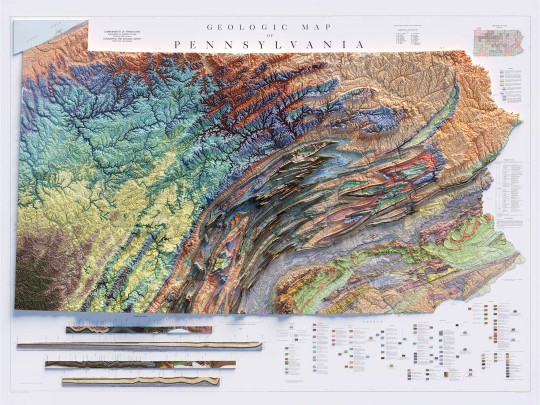
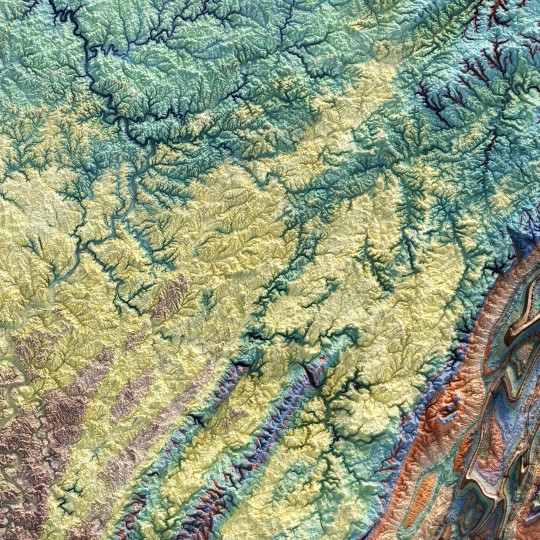
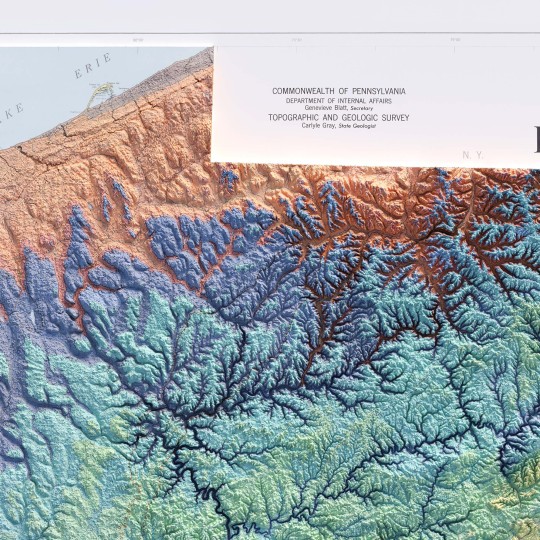
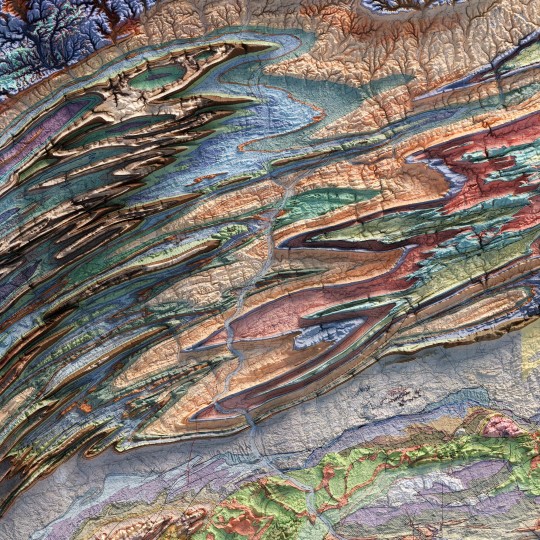
From the 1960s, a (restored) school geological map of Pennsylvania, obviously with shaded relief!
🗺️ 𝗠𝗔𝗣 𝗜𝗡𝗙𝗢 Geologic map of Pennsylvania, Topographic and Geologic Survey, Commonwealth of PA, 1960. Source: David Rumsey Collection.
If you like our work, want to see our daily updates (or want to say hello to our studio), consider to follow our Instagram or Twitter account. Otherwise if are interested in our prints or have a custom request check our shop.
#Pennsylvania#pittsburgh#usmap#mapdesign#GeologyPA#VintageMap#PennsylvaniaHistory#ShadedRelief#GeologicHeritage#PAExploration#RockFormation#GeologicalTreasure#EarthScience#PennsylvaniaGeology#GeologicWonders#LandscapeHistory#GeologicalArt#ElevationData#GeologicMapping#BedrockGeology#NaturalHistory#GeospatialData#GeologicFeatures#MapArt#vizart
4 notes
·
View notes
Text
First Lieutenant David Fetherolf, Company K, 47th Pennsylvania Volunteer Infantry, spring 1864 (used with the permission of David Sloan)

David Fetherolf was one of many 19th-century German-Americans from the Commonwealth of Pennsylvania who worked to eradicate the brutal practice of chattel slavery while fighting to preserve America’s Union during the American Civil War. Learn more about his life via his biography here.
#american civil war#pennsylvaniahistory#american history#pennsylvania#civil war#lehighcounty#lehighvalley#pennsylvania dutch#german history
7 notes
·
View notes
Photo

"Coal is still a primary source of energy across the globe, but now it stands for the opposite of modernity. Aware, as we are, of the disastrous effects that extracting and burning coal has on the environment, coal has been practically banished from the visual/cultural landscape. Out of sight and out of mind? But coal is full of portent. It is a bellwether material of the Human/Nature/Time relationship which deserves our attention."
In advance of the exhibition 'Seeing Coal - Time, Material and Scale,' LCP Conservator and exhibition curator Andrea Krupp wrote about her research. Read the full essay here
Image: George Lehman, Coal Mine at Mauch Chunk (Philadelphia: C.G. Childs, ca.1837). Lithograph.
13 notes
·
View notes
Photo

Have you ever been to Cannon Hill in Boyertown that sits at the top of Union Cemetery? The first cannon on Cannon Hill was installed in 1876 on a wooden undercarriage. When the cannon was fired it would recoil so far back it would fly off the end of its wooden track. It was fired on holidays such as the 4th of July and Memorial Day. Townspeople complained bitterly about the noise and broken windows. On July 4, 1910 someone set fire to the undercarriage. No one knows who the culprits were, but there were guesses. Either townspeople did it so it could never be fired again or the men who were tasked with putting it back in place on the track each time it was fired, did it. Either way it was the end of firing the cannon on Cannon Hill. The track was replaced with a concrete base sometime later. The Boyertown Times announced on July 21, 1938, a dedication and presentation of a War Memorial overlooking Boyertown. You can still visit today and take in the views! #boyertown #boyertownpa #pennsylvania #pennsylvaniaisbeautiful #berkscountypa #berkscountyhistory #history #cannonhill #cannons #views #pennsylvaniahistory #historicalboyertown #betterinboyertown #cemetery (at Boyertown, Pennsylvania) https://www.instagram.com/p/CR1lI5lLpms/?utm_medium=tumblr
#boyertown#boyertownpa#pennsylvania#pennsylvaniaisbeautiful#berkscountypa#berkscountyhistory#history#cannonhill#cannons#views#pennsylvaniahistory#historicalboyertown#betterinboyertown#cemetery
3 notes
·
View notes
Photo

#marieantoinette #frenchroyalty #wyalusing #susquehannariver #frenchazilum #bradfordcounty #bradfordcountypa #scenicoverlook #pennsylvaniahistory #pennsylvaniascenery (at Marie Antionette Scenic Overlook Wyalusing Pa) https://www.instagram.com/p/CEMTq4kl3Xm/?igshid=1bs6m4ak8elp7
#marieantoinette#frenchroyalty#wyalusing#susquehannariver#frenchazilum#bradfordcounty#bradfordcountypa#scenicoverlook#pennsylvaniahistory#pennsylvaniascenery
17 notes
·
View notes
Text
The Hanging and the Hermit: The Tragic Timing of William Wilson
Just southwest of Hummelstown, Pennsylvania is a place carved by nature and visited by humans for hundreds of years. The caves have had many names, Wilson Cave, Hummelstown Cave, Stoverdale Cave, Giant’s Cave, Indian Cave, and the most recent moniker, Indian Echo Caverns. Since 1929 the caves have been open to the public with tours regularly walking through and marveling at the natural wonders. Hundreds of thousands of people walk the cavern paths each year, but what some may not know is that one corner of the caves houses a story of betrayal, desperation, exile, and death.
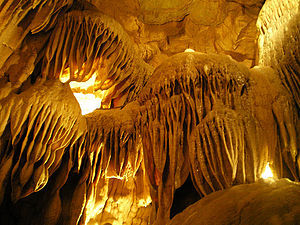
The Indian Echo Caverns. Image via Wikipedia.
William “Amos” and Elizabeth Wilson (also known as Harriet) were siblings born in Lebanon, Pennsylvania in the late 1700s. The pair were born two years apart but they were extremely close, remaining in contact as much as possible after William left home at sixteen to become an apprentice stone cutter. When Elizabeth later left home at the age of eighteen she journeyed to Philadelphia where part of her path becomes murky. Some say that she became a servant in the home of a wealthy family, others say she found work at the Indian Queen Tavern. What is known for certain is that during her time in Philadelphia her tragic fate was sealed. Elizabeth met a young man by the name of Smith and by 1784 she had at least one child with him, many accounts reporting that she had twins. The problem was that Smith was already married and had no intention of continuing his life with Elizabeth or the children. In October 1784 Elizabeth went missing for several days. When she returned the children were gone and Elizabeth was unable to speak.
Within days the horrific fate of her infants was revealed when their bodies were found in the woods by a hunter. With the discovery came the accusations, all of which were sharply pointed toward Elizabeth. The authorities acted quickly, arresting Elizabeth and committing her to prison to await trial for the murder of her babies. When the day arrived for the young woman to face a judge the courtroom was bursting at the seams with many people who knew Elizabeth well and could not believe, refused to believe, that she was capable of the accusations before her. The numbers did not sway anything in her favor and after eleven hours the judge handed down the ultimate sentence. Elizabeth Wilson would hang on December 7th 1785.
Far from the fury and horror of the courthouse, William did not learn of the accusations against his sister until after her sentencing was handed down. Arriving at the jail on December 3rd, William was finally able to convince Elizabeth to speak and her words revealed what he believed to be the true story. According to William, Elizabeth told him that on that horrible October day Smith contacted her, asked her to meet him, and told her to bring the children along. While walking through the woods en route to their meeting he surprised Elizabeth, killed the babies and then attacked her, telling her that if she ever spoke of the incident he would kill her as well. The shock of the ordeal plunged her into a severe state of trauma rendering her unable to speak and therefor unable to defend herself against any accusation in court. William knew his sister, he believed his sister, and now he took it upon himself to set her free.
William had only four days to save Elizabeth’s life. Riding from town to town, he began voraciously gathering information, talking to witnesses and judges, and building the case for her innocence. He finally made his way to the Commonwealth’s executive authority, the Supreme Executive Council, and plead his case for a pardon for Elizabeth. Here William was partially successful, gaining the support of Council Vice-President Charles Biddle. Biddle felt certain about Elizabeth’s innocence and the rest of the Council, although not as convinced as Biddle, decided to grant a stay of execution to allow William to further build his case. The execution was rescheduled for January 3rd 1786 and for the Wilson siblings the clock began counting down.
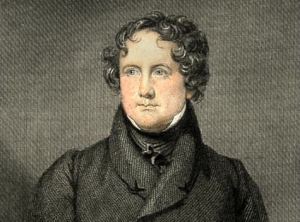
Charles Biddle.
William continued his pursuit of information and some accounts say that he tracked down Smith who claimed he never even met Elizabeth. It didn’t matter, William had witnesses connecting him to Elizabeth and he was prepared to bring their names to the Council. William may have felt he won the fight, but before he could deliver the new information an illness derailed him just before Christmas. William recovered but his deadline loomed dangerously close, it was now the day before Elizabeth was scheduled to hang.
With only hours left William arrived at the home of the Supreme Executive Council President, Benjamin Franklin. Franklin directed him to the home of Biddle and believing fully that Elizabeth would be pardoned with just a little more time, Biddle wrote another stay of execution, “Do not execute Wilson until you hear further from Council.” William had fifteen miles between him and the execution site in Chester, Pennsylvania. He jumped on his horse and rode.
The ride to Chester was hindered by everything imaginable. A violent storm thrashed all around William and when he arrived at the Schuylkill River he was faced with a tragic set of circumstance. The storm had already destroyed the bridges, ferry boats were not running, and the river tossed in front of him with no way to cross. After pacing the riverbank for a time he made his move, attempting to cross on horseback, but the horse could not complete the crossing. He finally threw himself into the freezing water, swimming across with the stay of execution in hand. William made it across, found another horse, and raced toward the jail, but it was too late. When he arrived at the execution site his sister was hanging from the gallows. Realizing what his appearance meant and seeing the stay of execution her body was cut down by the sheriff and they attempted to revive her but Elizabeth was gone, dying only minutes before William’s arrival with the paper that would have saved her life.
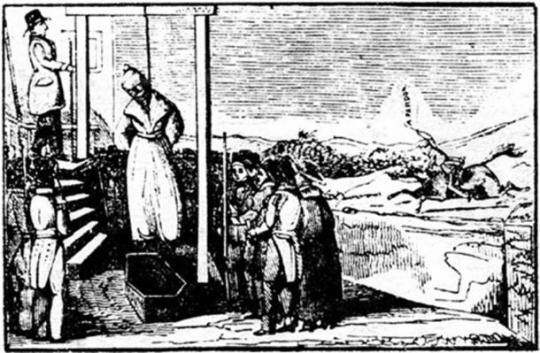
An illustration showing the arrival of William at the execution site. The word appearing above his head reads “A Pardon”.
The murder of her children stunned Elizabeth into temporary silence but the death of Elizabeth completely rocked William to his core. For months he remained in a state of semi-delirium, unable to reconcile in his mind the many strikes that pushed his sister to her death only moments before he could have saved her. When he recovered from the shock William declared that he no longer had any interest in the outside world. He wandered the region in solitude until he found a cave hidden inside a forest twelve miles from Hummelstown, Pennsylvania.
William made the caverns his home for nineteen years, creating a living space out of one room where he kept a table, a stool, a few utensils, and a bed of straw gathered on a ledge ten feet from the ground that he accessed with a simple ladder. Among his few possessions he kept a copy of the Bible which he studied from in between his regular morning and evening church services. For the remainder of his life he was a mostly solitary man deeply committed to cleanliness, reading, and writing. He was a prolific writer, penning many pieces but never sharing them with anyone, intending for them to be published only after his death. He claimed he was content with his life, never desiring to be involved with the world and people around him. The death of his sister gave him “a wound which they can never heal.”
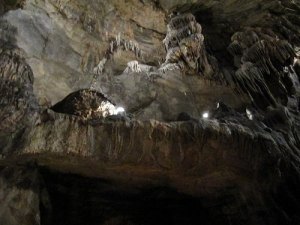
The ledge where William slept. Image via flickr user Sherrie.
One of the few people to encounter William on a semi-regular basis was a farmer who paid him to do odd jobs and to carve millstones. On October 13th 1821 William did not show up to the farm so the farmer went looking for him. When he arrived at the cave he found the remnants of a fire, one of the many William regularly lit under his stone ledge to keep warm in the chilly cave. Laying in the straw was a lifeless William, likely taken by smoke inhalation.
According to reports, William was buried in an unmarked grave on the farmer’s property. It was only after his death that the farmer learned his friend’s story after finding numerous writings and William’s journal detailing the tragic tale of his sister. Among his many writings was a manuscript entitled The Sweets of Solitude: Instructions to Mankind How They May Be Happy in a Miserable World, published posthumously as William intended.
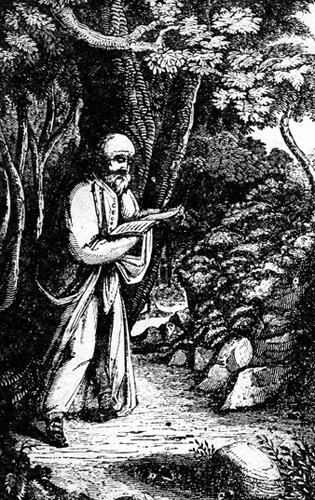
An illustration of The Pennsylvania Hermit.
Today a visit to the Indian Echo Caves costs less than twenty dollars and promises a breathtaking look into the natural hidden wonders of Pennsylvania. Reviews include words like “pleasant”, “beautiful”, and “wonderful”, all well deserved praises. Less easy to find among the guest comments is the tragic tale of William Wilson, “The Pennsylvania Hermit” who was minutes from saving one life and spent nineteen years of his own living in the caves with only his memories, his regrets, and a “wound” the outside world could “never heal.”
In 1839 the story of William Wilson was published in an account that included his manuscript The Sweets of Solitude: Instructions to Mankind How They May Be Happy in a Miserable World, it can be read here.
#husheduphistory#featuredarticles#history#PennsylvaniaHistory#caverns#PennsylvaniaCaverns#TragicHistory#LegalHistory#timingiseverything#Timing#NotAMomentTooSoon#IndianEchoCaverns#TragicStory#TrueStory#Injustice#PennsylvaniaHermit#tragictale#RIP#exile#WeirdHistory#StrangeHistory#LostHistory#ForgottenHistory#Historyiswild#historyisawesome#historyisnotboring#true#fact#gallows#untimelydeath
6 notes
·
View notes
Photo

The Hostetler Blind Family Quartet #art #paintersofinstagram #artistsofinstagram #music #musicians #blind #pennsylvaniahistory #pennsylvania https://www.instagram.com/p/CDxFPFjMLD_/?igshid=1d0wjqpplah9h
1 note
·
View note
Photo

25th September 1639, the first printing press in the North American Colonies is established in Cambridge Massachusetts by Elizabeth Glover. On the same day in 1690, the first multi page newspaper is published in the America’s as ‘Publick Occurrences Both Forreign and Domestick’. After one edition, the newspaper was shut down by the colonial government. The paper’s single edition was edited by Benjamin Harris, who that same year would publish the ‘New England Primer’. Also on the same day in 1791, English-born American printer William Bradford died. Joining William Penn at his new colony in 1686, he became the proprietor of Pennsylvania's first printing press, and in 1690, helped construct the first paper mill in the English colonies. In 1693, he was appointed to the position of public printer for New York, this was followed jointly by the position of public printer of New Jersey in 1702. In 1723 he was approached by Benjamin Franklin, who was interested in printing and asked him for a job. Bradford referred him to his son, who was a printer in Philadelphia. Franklin would himself by 1728, set up a printing house, becoming the publisher of ‘The Pennsylvania Gazette’. Bradford three years previously had started New York’s first newspaper the ‘New-York Gazette’. The paper would last until 1744, when James Parker, a former apprentice of Bradford’s, founded a rival newspaper the ‘Weekly Post Boy’. Parker’s paper was backed by Benjamin Franklin. All art shown is for sale on the website: www.ofgraveconcern.com Follow @ofgrave.concern for more tales from history. #newenglandhistory #newenglandlife #printingpress #prıntıngpress #printingpresses #printinghistory #colonialhistory #17thcentury #massachusettshistory #bostonhistory #puritan #williampenn #benjaminfranklin #newspapers #colonialstyle #pennsylvaniahistory #newyorkhistory #historyofprint #historyofprinting #18thcentury #18thcenturyhistory #17thcenturyhistory #papermill #printinghouse #historicaltype #typeface #typefacedesign #colonialrevival https://www.instagram.com/p/CUNeKitlNdL/?utm_medium=tumblr
#newenglandhistory#newenglandlife#printingpress#prıntıngpress#printingpresses#printinghistory#colonialhistory#17thcentury#massachusettshistory#bostonhistory#puritan#williampenn#benjaminfranklin#newspapers#colonialstyle#pennsylvaniahistory#newyorkhistory#historyofprint#historyofprinting#18thcentury#18thcenturyhistory#17thcenturyhistory#papermill#printinghouse#historicaltype#typeface#typefacedesign#colonialrevival
0 notes
Text
Sit Besides The Grapevines
Sit Besides The Grapevines
Pennsylvania Interstate Rest Area As the sun rises-Pennsylvania I79 Grapevines near Erie Pennsylvania Pennsylvania Information Thanks for stopping by 🙂 Alice Pull Up A Seat

View On WordPress
#frapevines#interstate79#InterstateTravel#pennsylvaniahistory#picnicarea#Pullupaseat#RestArea#travelstop
0 notes
Photo

A restored cell block in Eastern State Penitentiary #easternstatepenitentiary #philadelphia #philly #jail #prison #restoration #penitentiary #cell #cellblock #pennsylvania #pa #pennsylvaniahistory (at Eastern State Penitentiary)
FYI I have an Instagram now :D
#cell#cellblock#philadelphia#prison#pennsylvaniahistory#pennsylvania#penitentiary#philly#easternstatepenitentiary#pa#restoration#jail#wordsy hunts spooks
5 notes
·
View notes
Photo

In 1985, the J & L Steel site on the north side of the Monongahela river was cleared and a publicly subsidized High Technology Center was built. The Pittsburgh Technology Center, home to many major technology companies, is planning major expansion in the area soon. In the 1980s, the "Renaissance II" urban revitalization created numerous new structures, such as PPG Place. In the 1990s, the former sites of the Homestead, Duquesne and South Side J&L mills were cleared. In 1992, the new terminal at Pittsburgh International Airport opened. In 2001, the aging Three Rivers Stadium was replaced by Heinz Field and PNC Park, despite being rejected by voter referendum. In 2010, PPG Paints Arena, replaced the Civic Arena, which at the time was the oldest arena in the National Hockey League. Tourism has recently boomed in Pittsburgh with nearly 3,000 new hotel rooms opening since 2004 and holding a consistently higher occupancy than in comparable cities. Meanwhile, tech giants such as: Apple, Google, IBM Watson, Facebook, and Intel have joined the 1,600 technology firms choosing to operate out of Pittsburgh. As a result of the proximity to CMU's National Robotics Engineering Center (NREC), there has a boom of autonomous vehicles companies. The region has also become a leader in green environmental design, a movement exemplified by the city's convention center. #Pennsylvaniahistory #travelPennsylvania #pittsburgh #city #explorePennsylvania #urbanphotography #pittsburghphotography #architecture #citykillerz #Pennsylvaniaphotography #streets #city_captures #street_photography #roadtrip #midwest_captures #capturedpittsburgh #ohio #architecturephoto #onlyinPennsylvania #city_captures #street_vision #citygrammer #Pennsylvaniaarchitecture #town #pennsylvaniaphotography #architecturephotography #raw_usa #cityscape #cityphotography (at Pittsburgh, Pennsylvania) https://www.instagram.com/p/CLX_k0HJ2tC/?igshid=8e9kta72hklm
#pennsylvaniahistory#travelpennsylvania#pittsburgh#city#explorepennsylvania#urbanphotography#pittsburghphotography#architecture#citykillerz#pennsylvaniaphotography#streets#city_captures#street_photography#roadtrip#midwest_captures#capturedpittsburgh#ohio#architecturephoto#onlyinpennsylvania#street_vision#citygrammer#pennsylvaniaarchitecture#town#architecturephotography#raw_usa#cityscape#cityphotography
0 notes
Photo
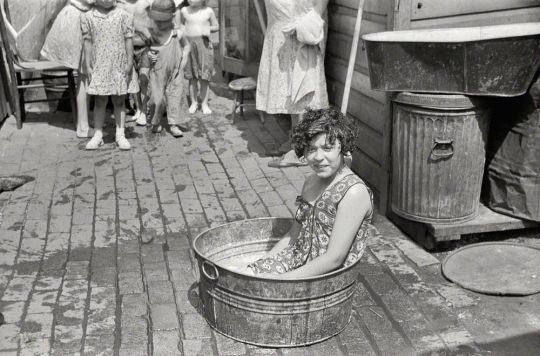
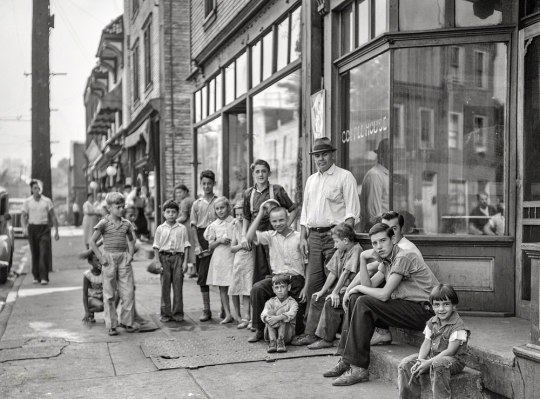
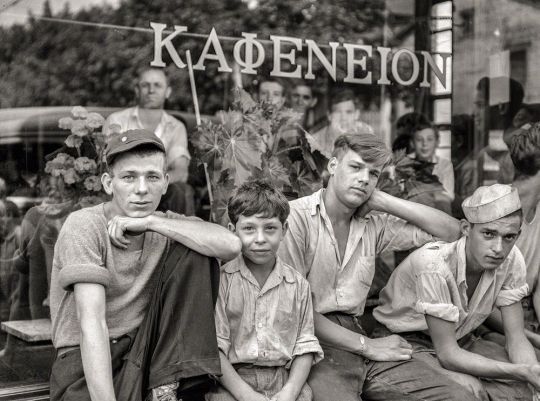
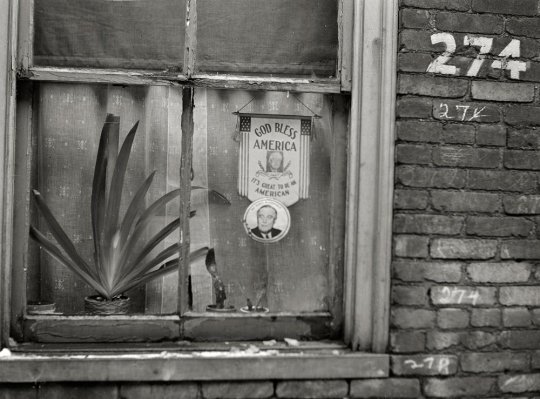
Rare Historical Photos Of Ambridge, Pennsylvania From 20th Century
#ambridge#pennsylvania#1900s#pennsylvaniahistory#pennsylvanialife#history#20thcentury#oldphotos#ushistory
0 notes
Text
#FlagDay: First State Color, 47th Pennsylvania Volunteer Infantry

First State Color, 47th Pennsylvania Volunteer Infantry. Presented to the regiment personally by Pennsylvania Governor Andrew Gregg Curtin, 20 September 1861.
Carried into combat during the American Civil War: Battle of Pocotaligo, South Carolina (October 1862). Red River Campaign, 1864: Battle of Sabine Crossroads/Mansfield, Pleasant Hill, and Monett's Ferry/Cane River, Louisiana (April 1864). Battle of Mansura, Louisiana (May 1864). Shenandoah Valley Campaign, 1864: Battle of Cool Spring/Snicker's Gap, Virginia, (July 1864). Battles of Berryville, Opequan and Fisher's Hill, Virginia (September 1864). Battle of Cedar Creek, Virginia (October 1864). Also carried by regimental soldiers as they defended the nation's capital in the wake of President Abraham Lincoln's assassination (April and early May 1865).
Retired and replaced with the 47th Pennsylvania's Second State Color, 11 May 1865.
#battle flag#american civil war#pennsylvaniahistory#civil war#pennsylvania#american history#louisiana#south carolina#florida#virginia
3 notes
·
View notes
Photo

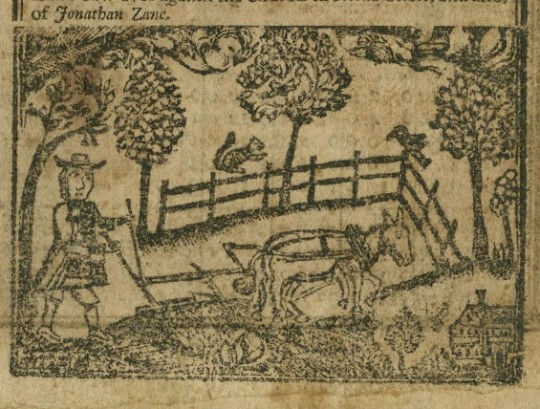
We were delighted to learn that it's not just us, but that squirrels have been mocking gardeners for centuries. In early America, almanacs such as this one were issued yearly in each major city, and were second only to the Bible in the number of copies printed and sold. But as they were only good for the year issued, they were usually discarded despite their sometimes delightful and elaborate covers.
John Tobler. The Pennsilvania [sic] town and country-man's almanack, for the year of our lord 1762. Germantown: Christopher Sower, 1761.
#BensLibrary#WoodcutWednesday#LCPrarebooks#18thCentury#ephemera#almanacs#Germantown#pennsylvaniahistory#Squirrels
27 notes
·
View notes
Photo

This day, 113 years ago, Boyertown lost 10% of its population in one evening. The Boyertown Opera House Fire is not only significant to Boyertown but to the state of Pennsylvania and the nation. This fire is reason all doors open outward in public buildings. It’s just one of the major changes the PA Legislature made to fire standards in buildings. We have more information and a great link to a short documentary about the events leading up to the fire and what happened afterward on our blog. (Link in profile) This Sunday the 17th at 1pm, the @boyertown.historical.society is have a wreath laying ceremony in remembrance of the victims of the Opera House Fire. This will be held at The Fairview Cemetery. #boyertownpa #boyertown #pennsylvania #pennsylvaniahistory #berkscountypa #berkshistory #fire #firehistory #firesafety #fireregulations #operahouse #tragedy #firetragedy #community #remembrance #january13 (at Boyertown, Pennsylvania) https://www.instagram.com/p/CJ_JYQMr_a_/?igshid=1l189sv6v97z1
#boyertownpa#boyertown#pennsylvania#pennsylvaniahistory#berkscountypa#berkshistory#fire#firehistory#firesafety#fireregulations#operahouse#tragedy#firetragedy#community#remembrance#january13
0 notes
Photo

#Repost @t.l.gardner (@get_repost) ・・・ Unique green glazed terracotta tiles atop the dome of the Pennsylvania Capitol Building #pacapitol #harrisburgpa #dauphincountypa #greentiles #greenroof #capitoldome #pennsylvania_life #pennsylvaniahistory #pennsylvania #pabeauty #onlyinpa #keystonestate
#pabeauty#repost#greenroof#capitoldome#onlyinpa#pennsylvania_life#pennsylvaniahistory#harrisburgpa#dauphincountypa#pennsylvania#greentiles#keystonestate#pacapitol
3 notes
·
View notes